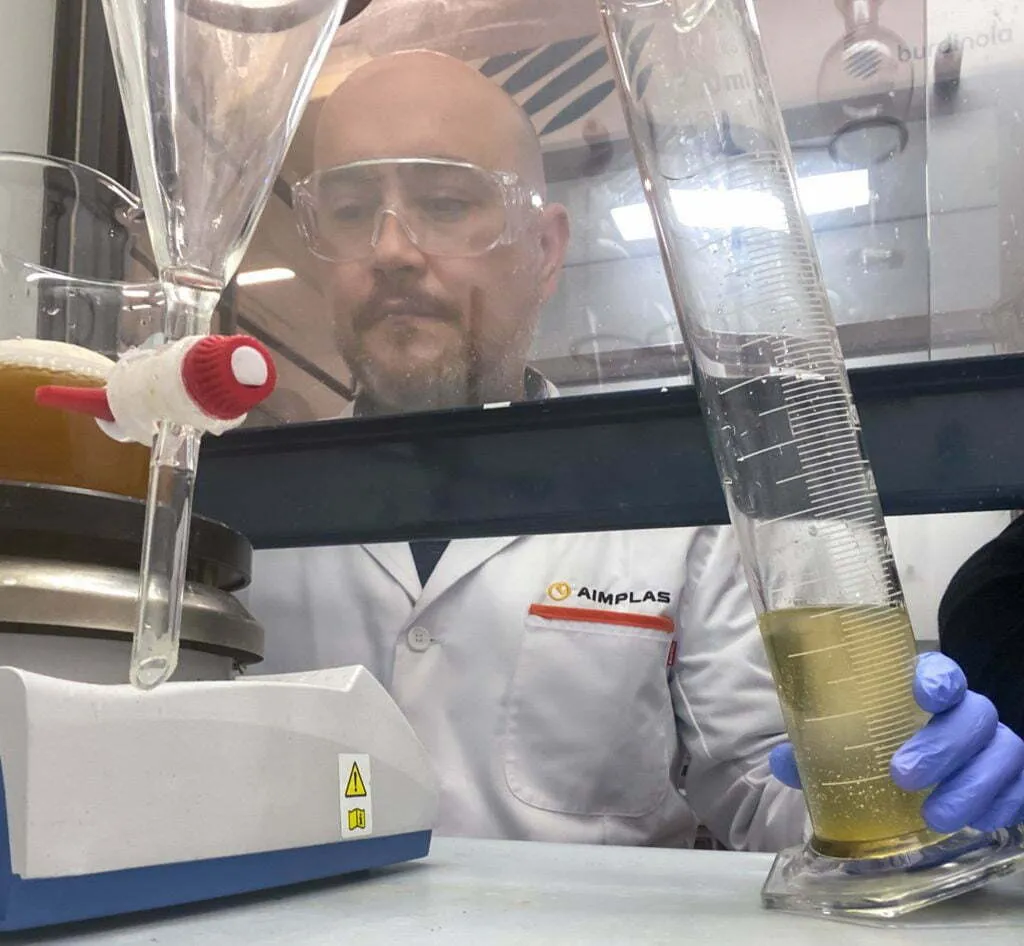Comprehensive system to prevent and filter microplastics from wastewater

Efficiently removing microplastics (particles smaller than 5mm) and nanoplastics (smaller than 1 µm) from sewage and sludge so they can be reused in urban and agricultural environments, is one of the ways to make optimal use of this resource. However, the technology currently used in wastewater treatment plants is not yet ready to be completely removed from the treatment process.
To capture the micro and nano plastics (MNP) from sewage, AIMPLAS is developing new purification technologies with ultrafiltration membranes to be combined with anaerobic digestion processes for a pilot study. It is expected to be more than 99% effective. This pilot study will fall under the framework of the PREVENPLAST project and therefore will be funded by the Valencian Innovation Agency (AVI).
As a part of the project, a standardised method is also being developed to analyse qualitative and quantitative data for the detection, identification, and quantification of these polymers. This method will allow us to study the efficiency of proposed treatment technologies. It will also make it possible to develop a good practice guide that will help industries prevent the generation of these materials and their release into the environment.
A pioneering solution in Europe
According to the results of project PREVENPLAST, the European Union has around 5300 Wastewater Treatment Plants. Juan Francisco Ferrer, Characterisation Laboratory Researcher at AIMPLAS, says that “the project will provide an advanced solution for the removal of micro and nanoplastics in industrial effluents as there is currently no system based on anaerobic membrane bioreactor (AnMBR) technology in Europe. In addition, it will allow companies to implement preventative measures into their industrial processes and allow them to anticipate future legal restrictions.”
More specifically, AIMPLAS is evaluating WWTP sewage and sludge samples in a pilot plastic processing plant to look at the presence of microplastics and nanoplastics at different points of the involved processes. AIMPLAS is also examining how to minimise their generation and recuperate them through ultrafiltration hollow fibre membrane technologies and anaerobic digestion. In the same way, AIMPLAS is also analysing the efficiency and long-term stability of these new tools from a technical, economic, and environmental point of view in order to optimise them.
The proposed solution will have a major economic impact on various sectors, such as the wastewater treatment and plastics processing sectors and will foster multi-sectoral agreements. AIMPLAS is working on this project in collaboration with the company Global Omnium, the CALAGUA Research Group of the Universitat de València (UV) and the Institute of Water and Environmental Engineering (IIAMA) of the Universitat Politécnica de València (UPV).
Circular economy solutions for more habitable environments
BIOREACT is another one of AIMPLAS´ circular economy initiatives. It focuses on recycling waste that has a polymeric starch base, like bags or mulch films used in agriculture. Currently, there is no specific method to recycle these products and they often end up composting or biodegrading in soils at the end of their useful lives. However, this project has brought together the University of Valencia (UV), PICDA and Viromii to work on a solution to recover and transform them into high added-value products. One such high added-value product is lactic acid, which can be used for polylactic acid (PLA) production, a bioplastic in high demand but scantily produced.
Likewise, in collaboration with the Food Contamination Laboratory (COAL), the Universitat de València (UV) and ITC Packaging, the Plastics Technology Centre is carrying out research for project REUSEPHB, designing innovative, reusable packaging made from food-safe and compostable polyhydroxy butyrate (PHB). This is a completely new type of packaging as there are currently no biopolymer-based options on the market. The existing alternatives are based on polylactic acid.
Additionally, to improve waste management and promote the sustainable construction of more habitable environments, AIMPLAS is creating a solution to convert disused mattresses into raw materials to be used in construction. For example, the old mattresses will be used as wall and floor cladding panels that have thermal and acoustic insulation properties. It is estimated that in the Valencian Community alone, around 300 000 old mattresses are discarded each year and most of them end up in landfills.
In this way, the Universitat Politécnica de València, Delax, Girsa and Recipur Eco, are collaborating on the ORACLE project to find a way to eliminate the barriers to recycling these common objects.
These projects have been financed using EU funds from the ERDF as a part of the ERDF funds within the 2014-2020 ERDF Operational Programme of the Valencian Community. This financing was announced on 14th January by the executive vice president of the Valencian Innovation Agency (AVI) and the funds were given with aim of strengthening and developing the Valencian Innovation System to improve production models for the financial years 2021 to 2023.